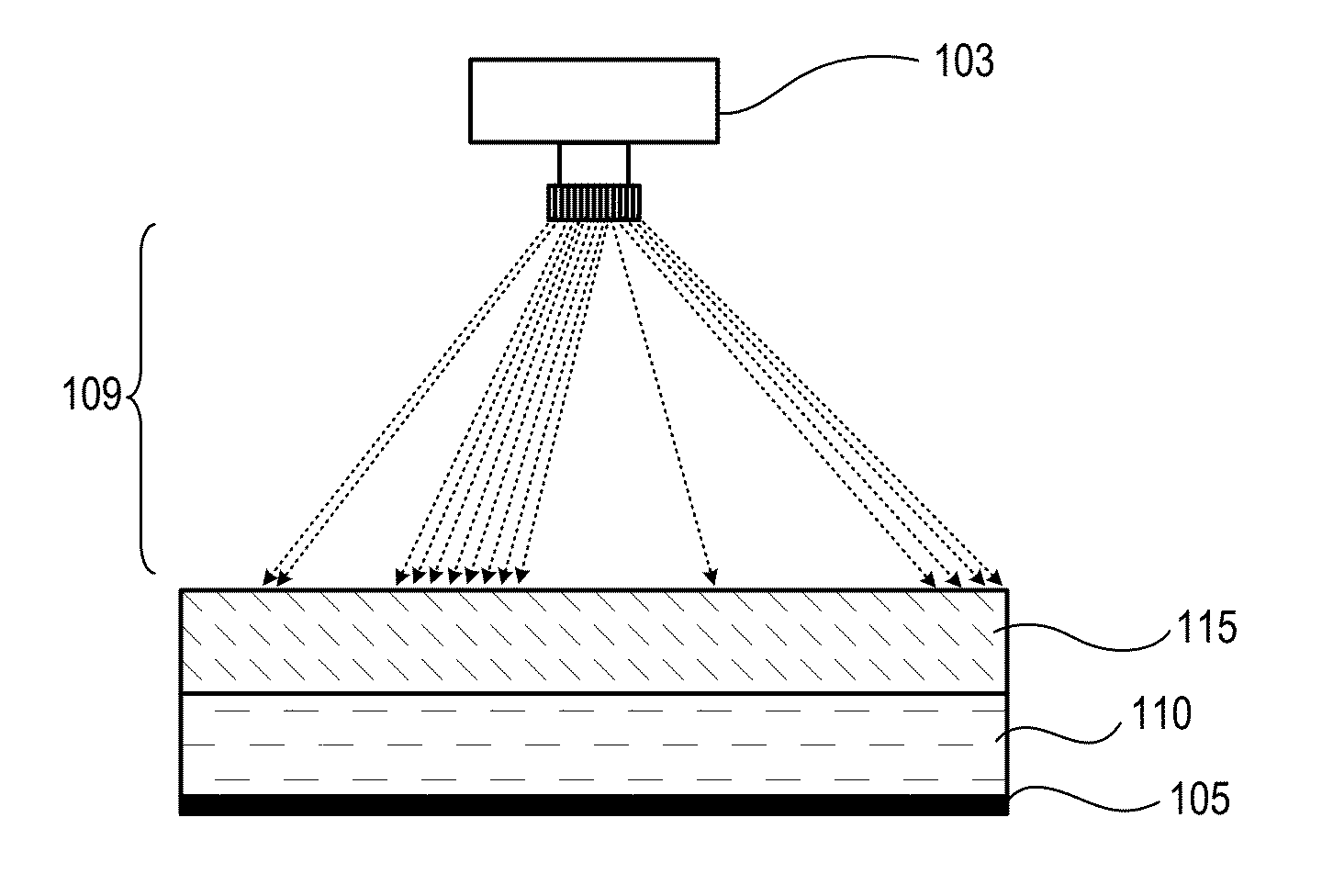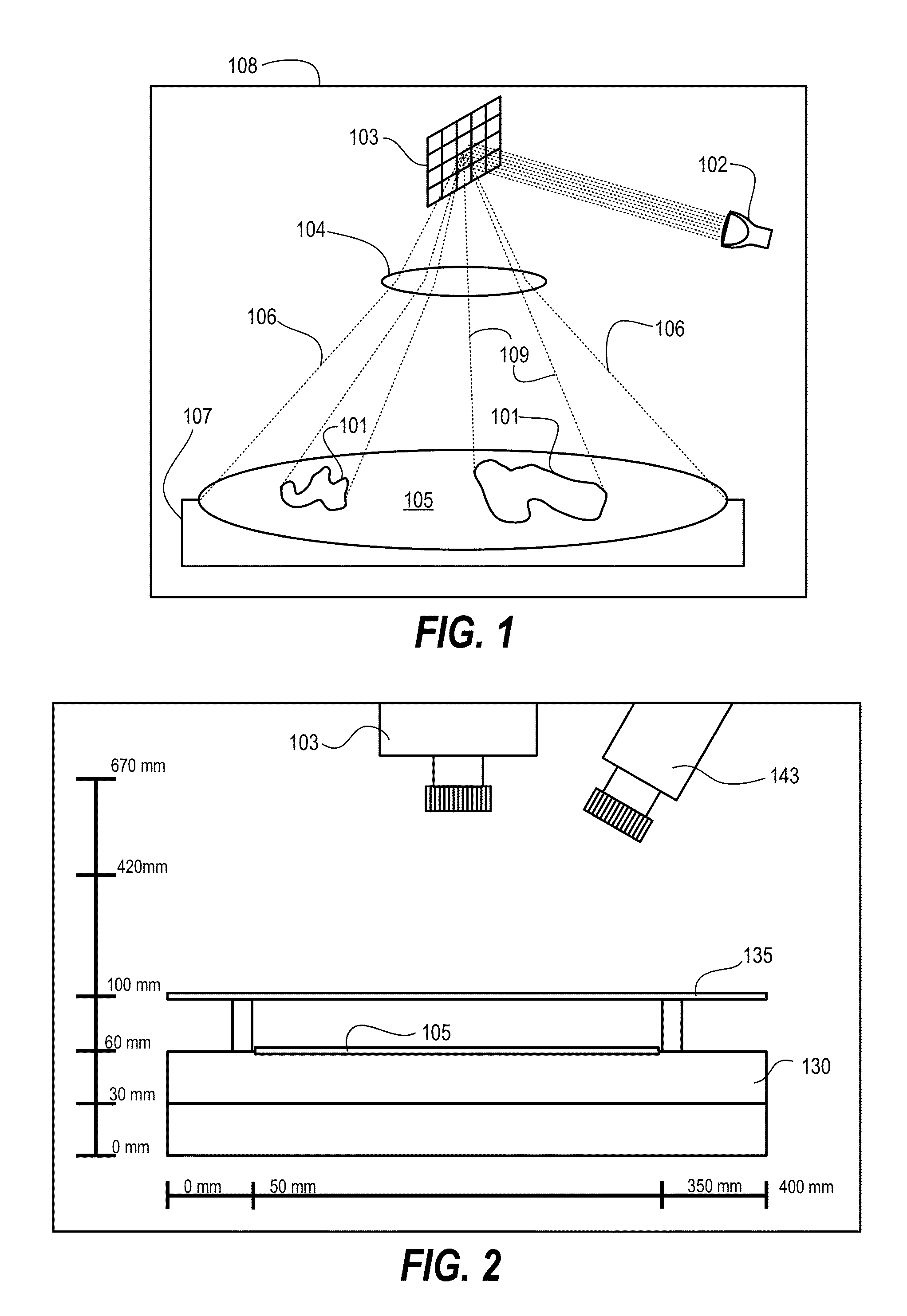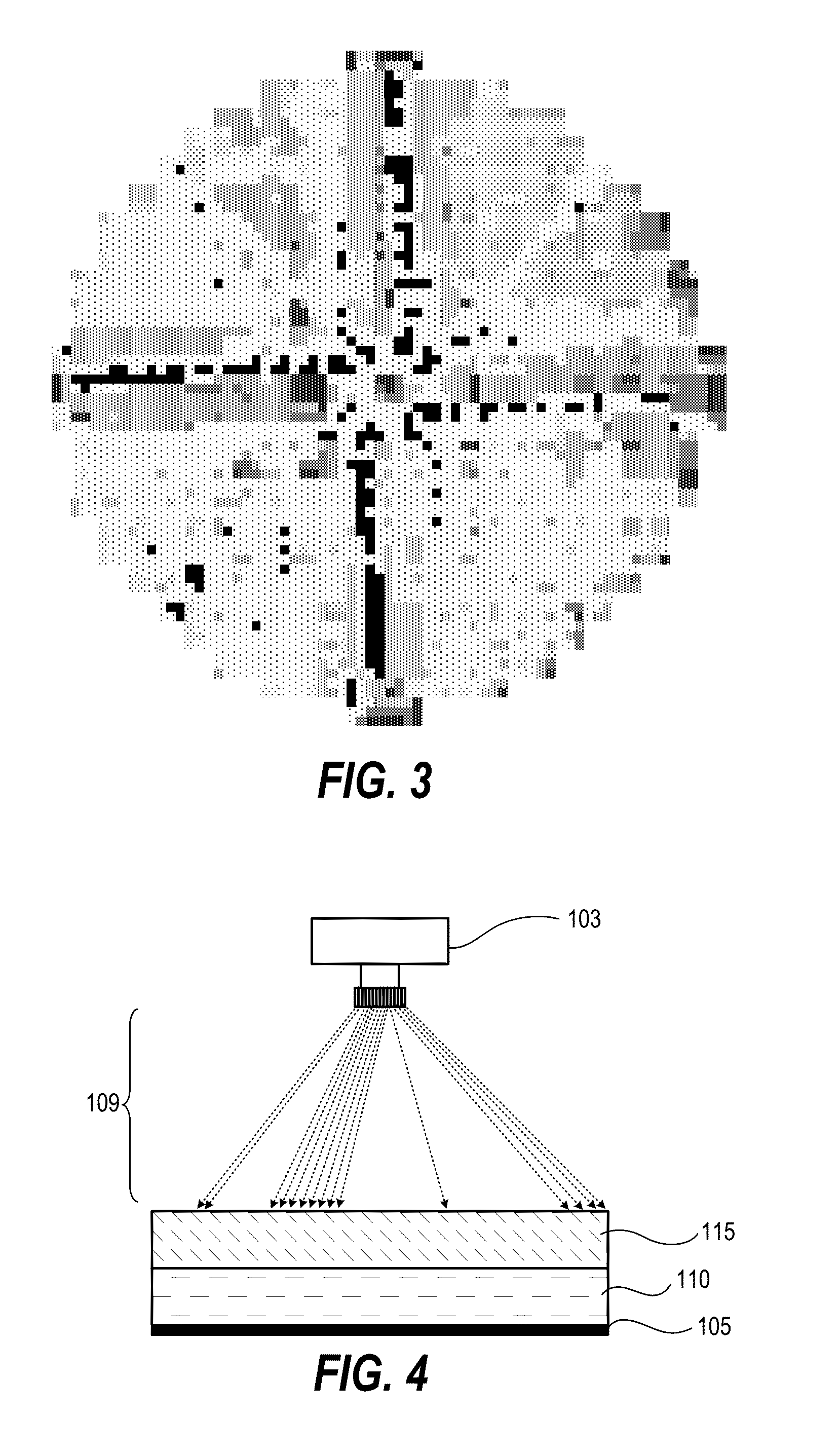Substrate Tuning System and Method Using Optical Projection
a technology of optical projection and substrate, applied in the field of substrate patterning, can solve the problems of insufficient preventive measures of semiconductor fabrication processes, process of developing and producing semiconductors, etc., and achieve the effects of improving temperature uniformity across the surface of the substrate, reducing defectivity, and increasing temperature uniformity
- Summary
- Abstract
- Description
- Claims
- Application Information
AI Technical Summary
Benefits of technology
Problems solved by technology
Method used
Image
Examples
Embodiment Construction
[0021]Techniques herein include systems and methods that provide a spatially-controlled or pixel-based projection of light onto a substrate to tune various substrate properties. Such pixel-based light projection can be used to tune various properties of substrates, including tuning of critical dimensions, heating uniformity, evaporative cooling, photolithographic flare, raster delay, and generation of photo-sensitive agents. Combining such pixel-based light projection with contact-based heating (for example, a hotplate) can achieve significant improvements in temperature uniformity across a surface of a substrate. Combining such pixel-based light projection with photolithographic patterning processes can improve processing uniformity and decrease defectivity.
[0022]In one embodiment, a digital light processing (DLP) chip, grating light valve (GLV), or other grid-based micro projection technology, coupled with a light source can focus an image (optionally using a lens) onto a substrat...
PUM
 Login to View More
Login to View More Abstract
Description
Claims
Application Information
 Login to View More
Login to View More - R&D
- Intellectual Property
- Life Sciences
- Materials
- Tech Scout
- Unparalleled Data Quality
- Higher Quality Content
- 60% Fewer Hallucinations
Browse by: Latest US Patents, China's latest patents, Technical Efficacy Thesaurus, Application Domain, Technology Topic, Popular Technical Reports.
© 2025 PatSnap. All rights reserved.Legal|Privacy policy|Modern Slavery Act Transparency Statement|Sitemap|About US| Contact US: help@patsnap.com



